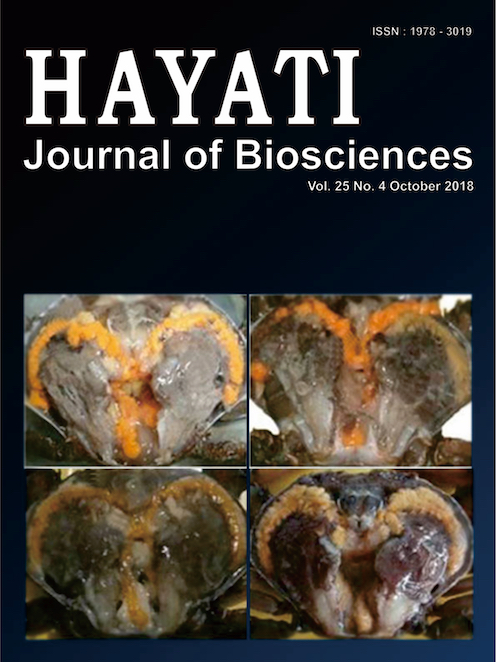Biofungicide Producing Bacteria: an In Vitro Inhibitor of Ganoderma boninense
Abstract
Oil palm is widely known as one of vegetable oil sources and the main comodity in Indonesian agriculture because of the benefits in non-food and food industries. Ganoderma boninense attack results in considerable losses to agriculture. Chemical control creates a harmful effect on health and the environment. Biocontrol is required to take over the function of chemical control. This study aimed to select bacteria that produce bioactive compounds as biofungicide against G. boninense pathogenic fungi and identify bacteria producing biofungicide using molecular method. The stages of bacterial isolate selection were performed through the selected hemolysis and isolate tests in the antagonistic test. Bacteria were extracted using ethyl acetate and their extract activity were tested. Analysis of bioactive compounds was conducted using thin layer chromatography (TLC) and the identification was based on 16S rRNA gene. The result of bacterial pathogenic test was obtained from two selected bacterial isolates namely 11B LB and 11B MD. Both bacterial isolates showed antagonistic effects by forming an inhibitory zone against G. boninense growth with percentage of inhibitor of 81 and 75%. Activity test of bacterial extract showed that crude extract of bacterial isolate 11B MD had the highest inhibitor activity that is 88.34%. TLC analysis proved that the active extract of bacteria containing metabolite compounds had Rf value of 0.1, 0.28, and 0.38. Isolate bacteria 11B MD was identified as Pseudomonas aeruginosa.
Downloads
HAYATI J Biosci is an open access journal and the article's license is CC-BY-NC. This license lets others distribute, remix, tweak, and build upon author's work, as long as they credit the original creation. Authors retain copyright and grant the journal/publisher non exclusive publishing rights with the work simultaneously licensed under a https://creativecommons.org/


















.png) IPB University
IPB University Department of Biology
Department of Biology The Indonesian Biological Society
The Indonesian Biological Society 

